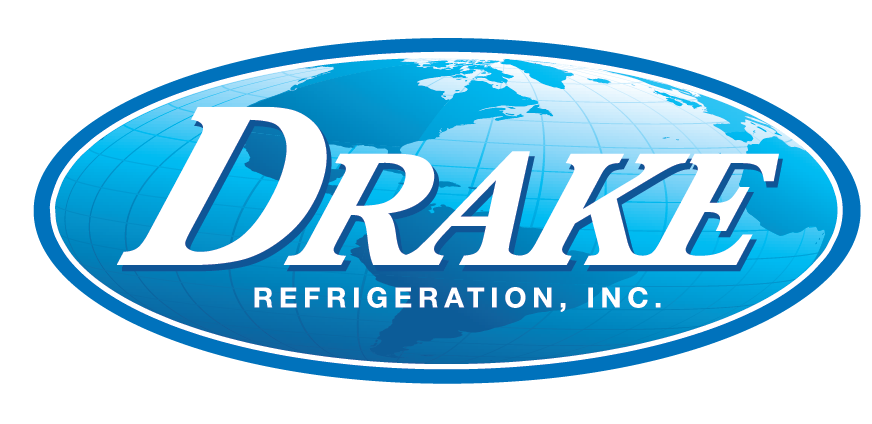Our Manufacturing Process
1 DESIGN
All of our chillers are designed and manufactured at Drake Chillers located in Bensalem, PA., USA. Each chiller order is individually processed by a team of engineers to ensure that we are providing the best possible product for each application. The type of chiller may vary in size, overall design, and industry served, but the process in which they are built is the same.
2 Burning & Bending
The metal is lasered or punched and deburred and the components come out as flat pieces. Most of the sheetmetal parts require being formed into a particular shape to establish a firm connection as a skeleton of the chiller. Bending is completed using a hydraulic press brake to form the metal with precision accuracy.
3 Assembly
The chiller metal infrastructure is securely fastened together using sheetmetal rivets, nuts and bolts, and anchors. The metal components are drawn in Solidworks so they come with pre-punched holes to mount components in proper positions and ensure no drilling is required.
4 Major components
Once the chiller frame is finished construction the major components are then loaded. The four fundamental components that make up the chiller include: compressor, condenser, expansion valve, and evaporator. Also, loaded at this time are the suction accumulator, pump (s), and tank. All of these components are mounted to the chiller frame and the unit is sent into the piping station.
5 Piping
After the chiller frame is assembled and all the major components are locked into place, the smaller components are connected using the copper tubes, elbows, adapters, etc. The smaller components include, but are not limited to: expansion valves, hot-gas bypass valves, ball valves, solenoid valves, liquid-line filters, and sight-glasses. Drake utilizes multiple CNC pipe benders to form the piping in the refrigeration and fluid circuit. This eliminates many of the braze joints from the chiller resulting in a more robust and reliable chiller.
6 Brazing
Brazing is a metal-joining process that uses a highly concentrated flame to heat up a filler metal between the joints of the pipes. The filler metal has a lower melting point than the pipes, thus when the filler metal melts, it is able to flow inside the gap between the pipes by capillary action. Afterwards the filler metal cools down and solidifies itself to the copper pipe creating a complete and leak-free connection.
7 Wiring
The wiring of the chiller's control panel is built concurrently during the assembly, piping, and brazing of a chiller. The technician performing the wiring will layout all the components that are to be installed in the electrical panel based on the unit specific diagram drawn by the engineer. These components include but are not limited to: microprocessor, contactors, fuses, circuit breakers, overloads, transformers, terminal blocks and wireways. With all the components securely mounted and wired together, the panel can then be installed in the chiller. All the major components including every motor, solenoid, and sensors are wired from inside the chiller back to the control panel.
8 Testing
First the refrigeration circuit is filled with helium to verify that there are no leaks. (Helium is a smaller molecule than the refrigerants, therefore if helium is not leaking through the refrigerant piping circuit, the larger molecule will not either). The fluid circuit is then checked for leaks by pressurizing the tank, pumps and piping with water. If no leaks are present on the refrigerant or fluid circuit, the unit is powered on, and the controller is programmed and all valves are opened. The refrigerant circuit will be placed in a vacuum and pulled to below 500 microns before any refrigerant is added to the circuit. The test stand is then modified to simulate the expected heat load that the chiller will experience when it is out in the field. When the unit is charged with refrigerant and the proper fluid is added to the circuit, it is time to run. The technician starting the equipment up will verify operation of every component on the chiller. Adjustments are made and if the chiller is operational per the specification, then the chiller will receive a data tag that details all of the pertinent information to the installer.
9 Quality Control
And lastly, before a chiller leaves Drake, it must be cleaned, fully insulated, and undergo a thorough quality inspection by a production supervisor and an engineer. When approved, the chiller will receive its P&IDs, installation, operation and maintenance manual, as well as the manual for the chiller controller. The chiller is then carefully packaged to ensure that it will arrive safely at its final destination.
Questions? Learn more about our industrial chillers, tanks, pumps, secondary heat exchangers, and fluid coolers by requesting a quote online or call (888) 372-5360 to connect with our sales team.












